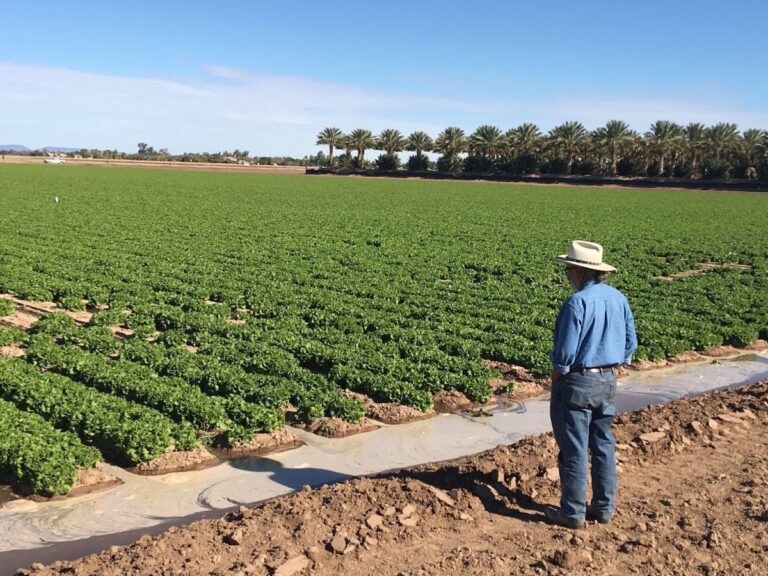Charles Sanchez, a co-principal investigator on the study, overlooks an irrigated field in Yuma, Arizona, on Dec. 12, 2019. Yuma ranks third for vegetable production in the nation and is also known as the Winter Lettuce capital. (Courtesy Yuma Center of Excellence for Desert Agriculture)
It may be hard to be-leaf, but during the winter months, 90% of vegetables come from fields in Yuma, Arizona. With 230,000 acres of land used for agriculture, Yuma county ranks third in the nation for vegetable production, according to Visit Yuma. But with drought conditions and water shortages in the West, agriculture is at risk.
To help address these issues, researchers in Arizona evaluated water efficiency and salt balances for 14 common crop varieties in the Winter Lettuce capital, coordinated by the Yuma Center of Excellence for Desert Agriculture.
The study took place over seven years and the results were published in a paper in November 2023.
New technologies used for study findings
The findings were the first time in over 50 years that such a comprehensive study on the crops and practices were carried out, according to the paper. This was possible thanks to scientific advances in new technologies since that time.
This data was used to inform organizations like the U.S. Bureau of Reclamation for future water management decisions and NASA who “wished to improve irrigation science and remote sensing technologies,” according to the paper.
It was one of the most extensive use of eddy covariance technology, which measures crop evapotranspiration, that’s ever been done, according to co-principal investigator Andrew French. Another technology used was remote sensing through satellite data, which is now available freely at high resolutions.
Irrigation efficiencies were found to be at 80-90%, which is considered a high percentage for how efficiently water is being used for crops. A higher percentage means less water is being wasted during farming.
The findings addressed assumptions, like surface irrigation is always inefficient.
“The vegetable producers in Yuma are very efficient […] because they’ve manipulated the flows, and the field, distance and border width, all these things,” co-principal investigator Charles Sanchez said.
The role of salt for future sustainable agriculture
“Why are you using so much sprinkler irrigation? Why are you flooding bare soil fields in August in the hottest time of the year?” are some of the commonly asked questions for […]
Full article: wildcat.arizona.edu

